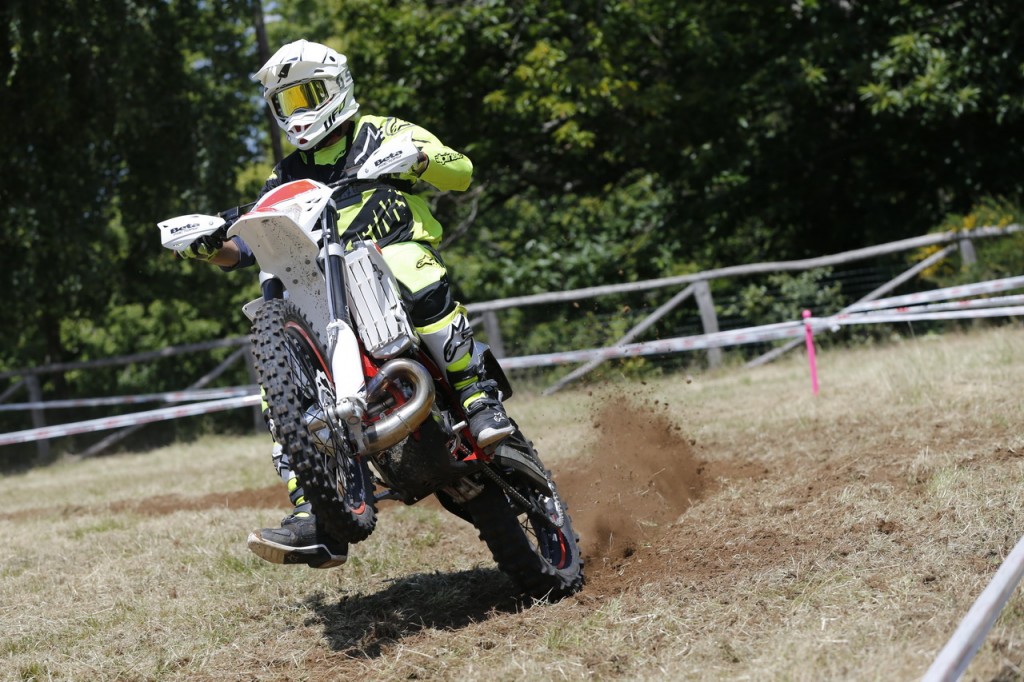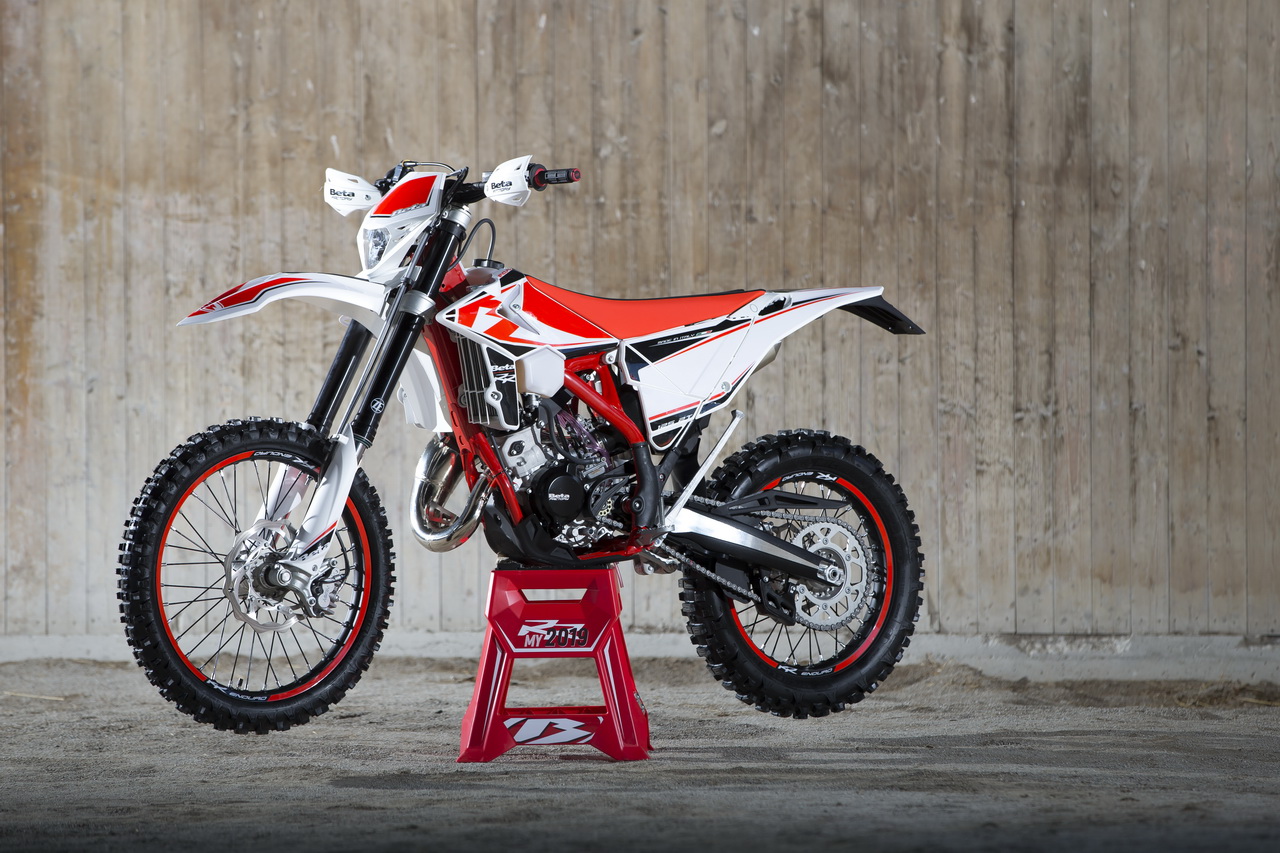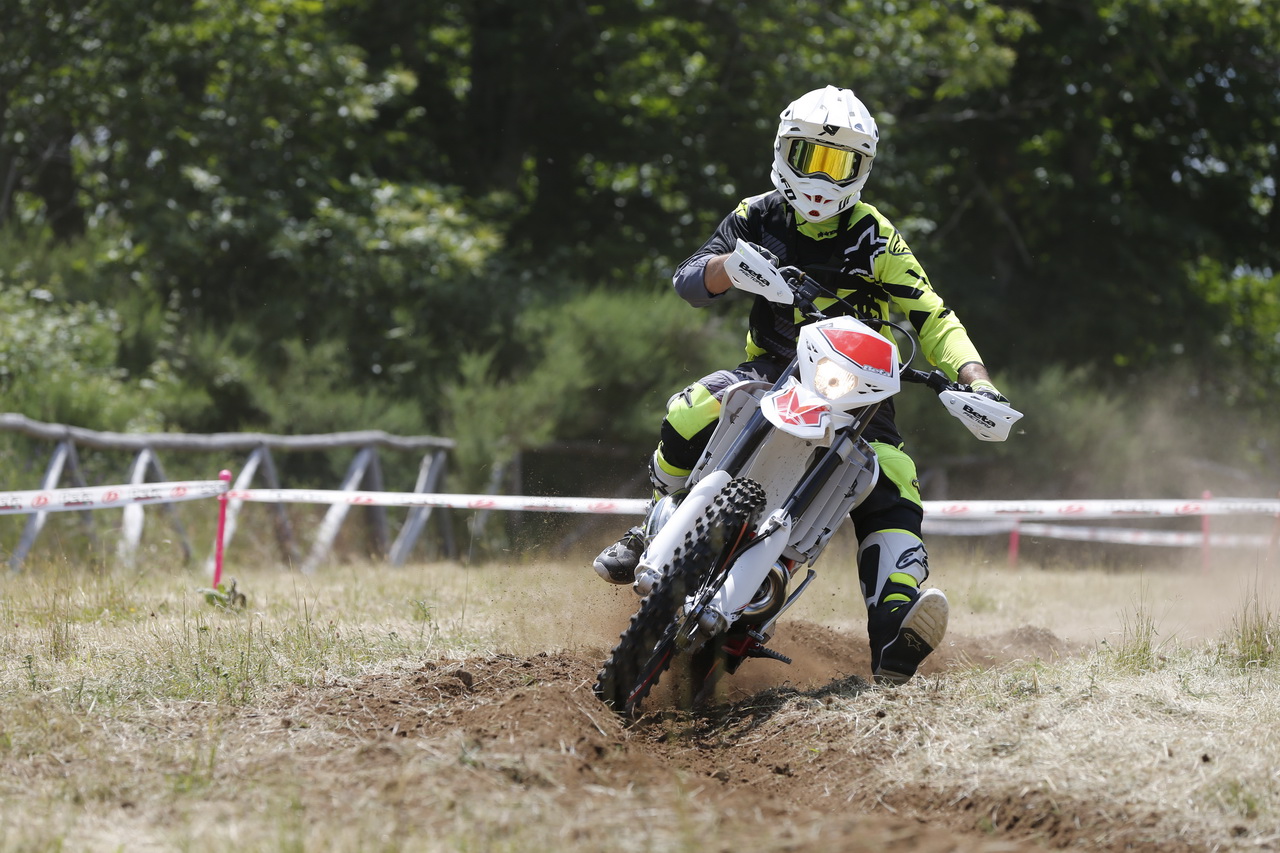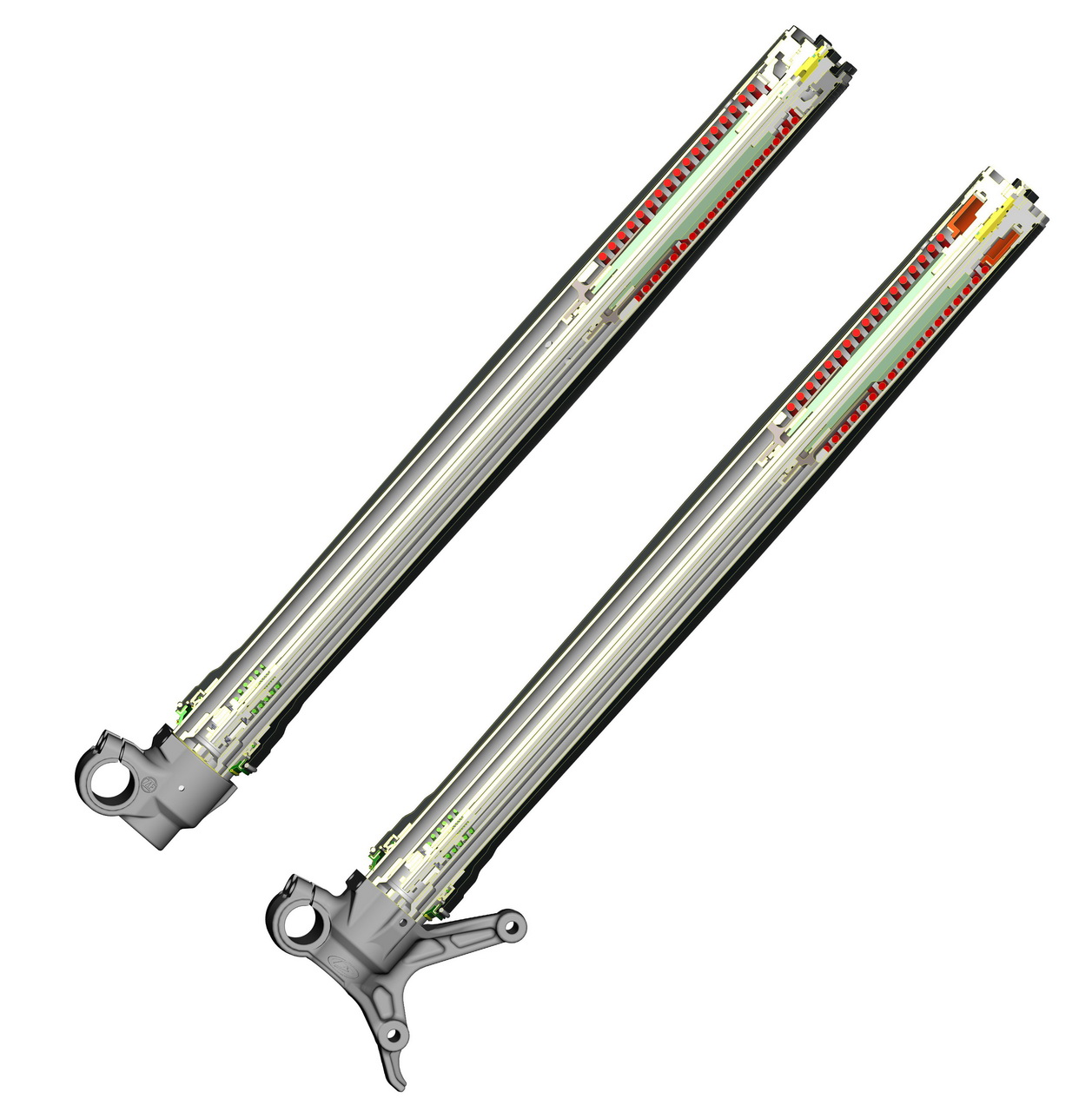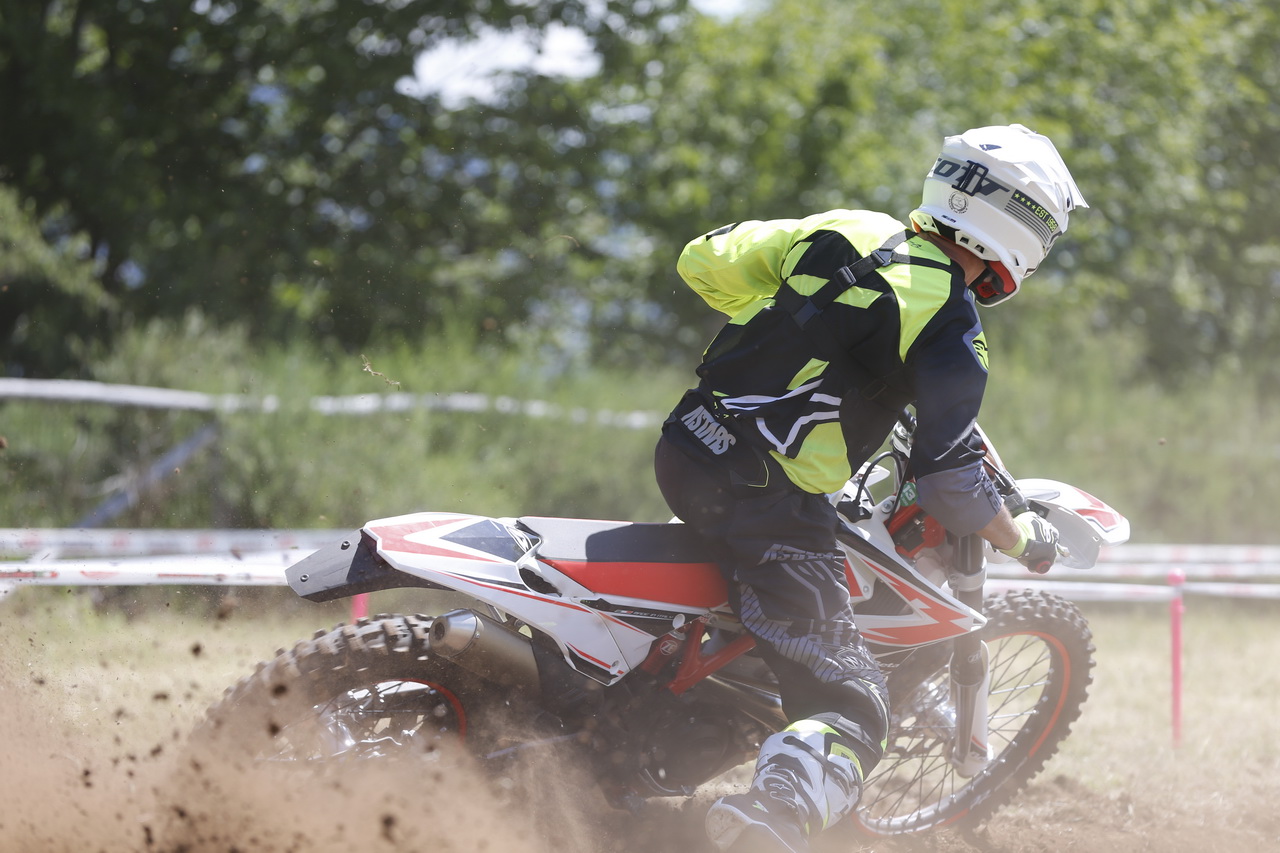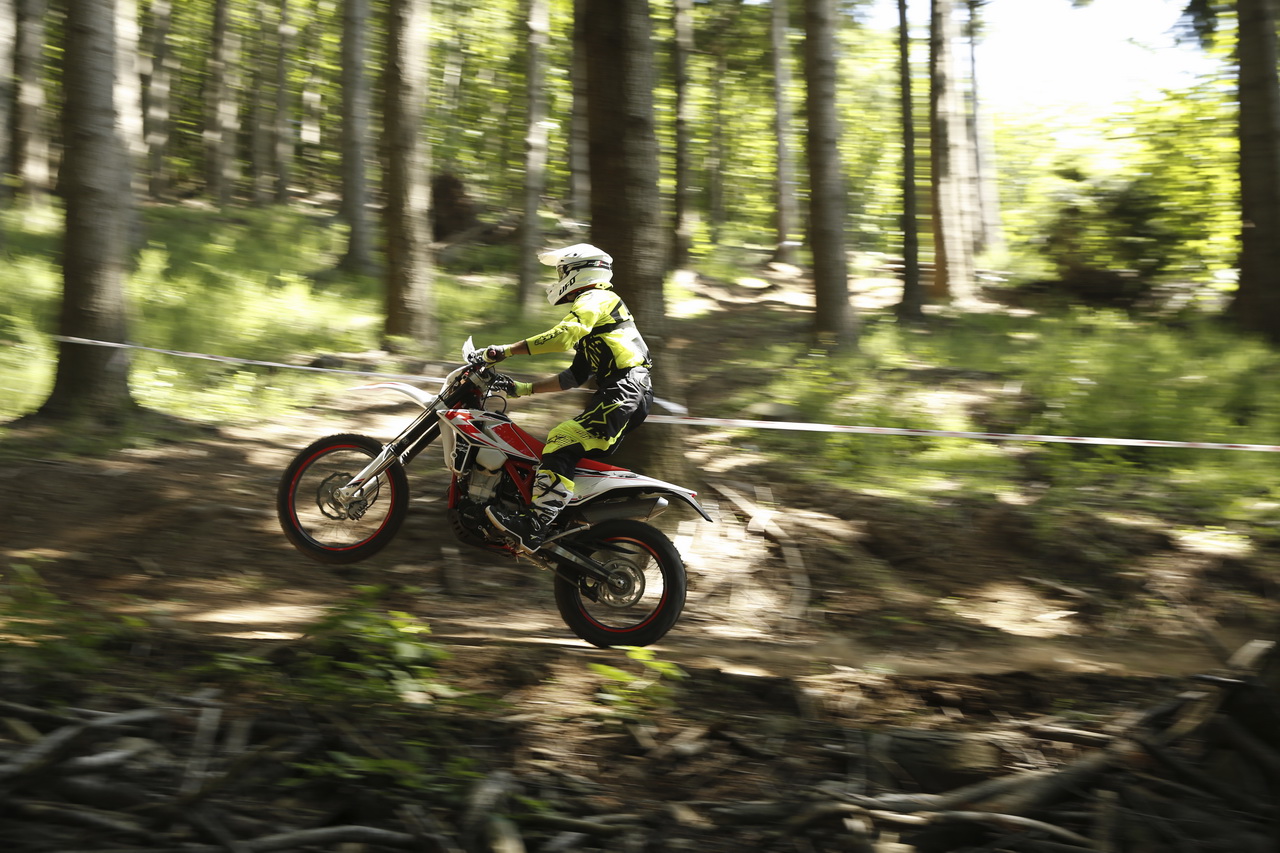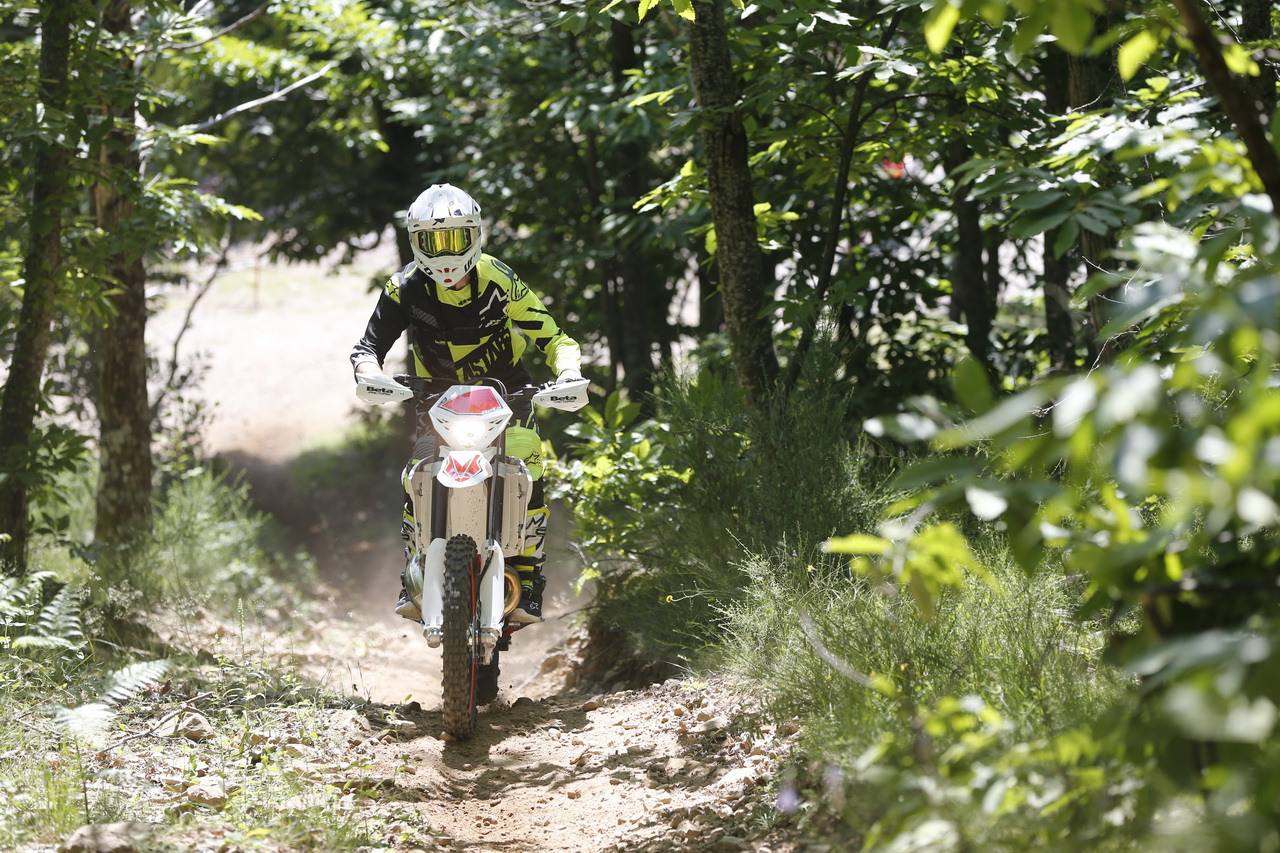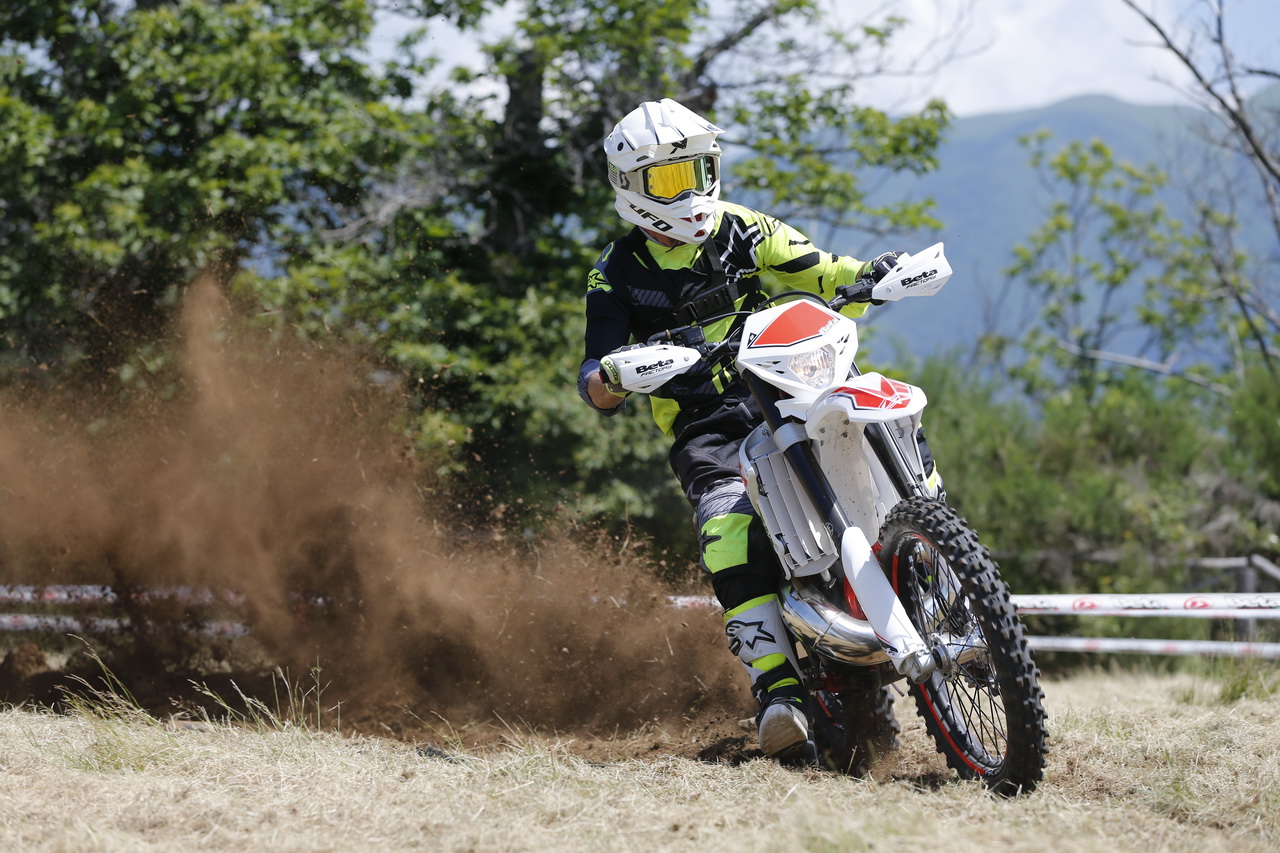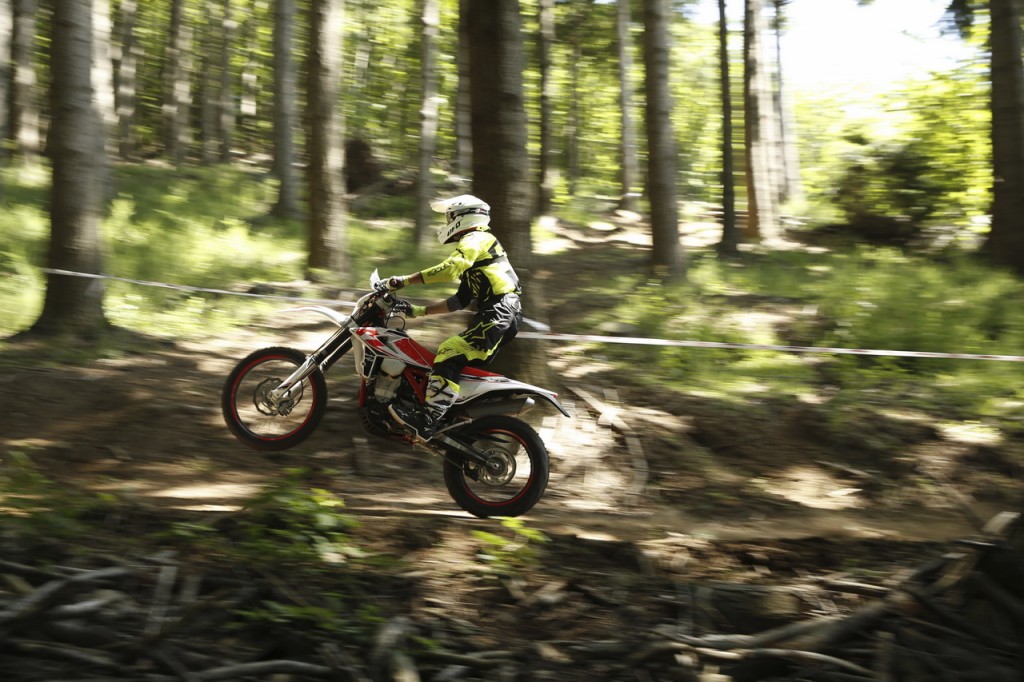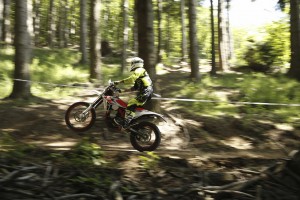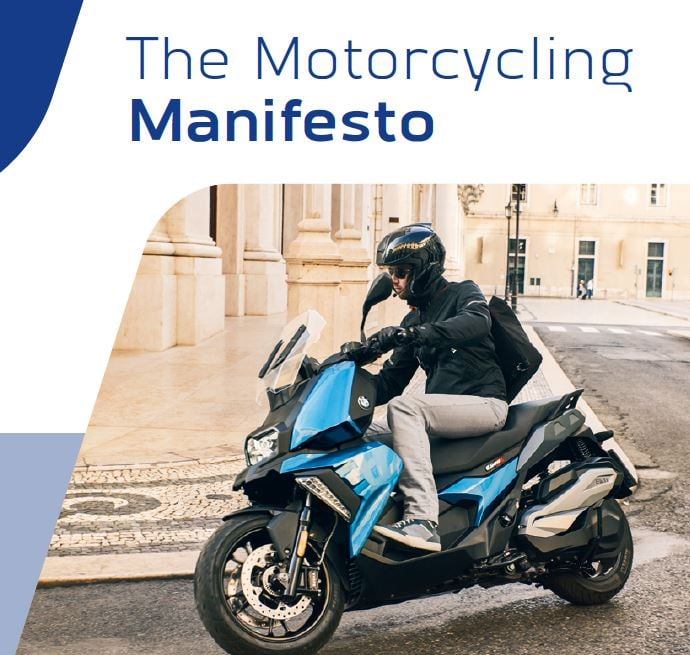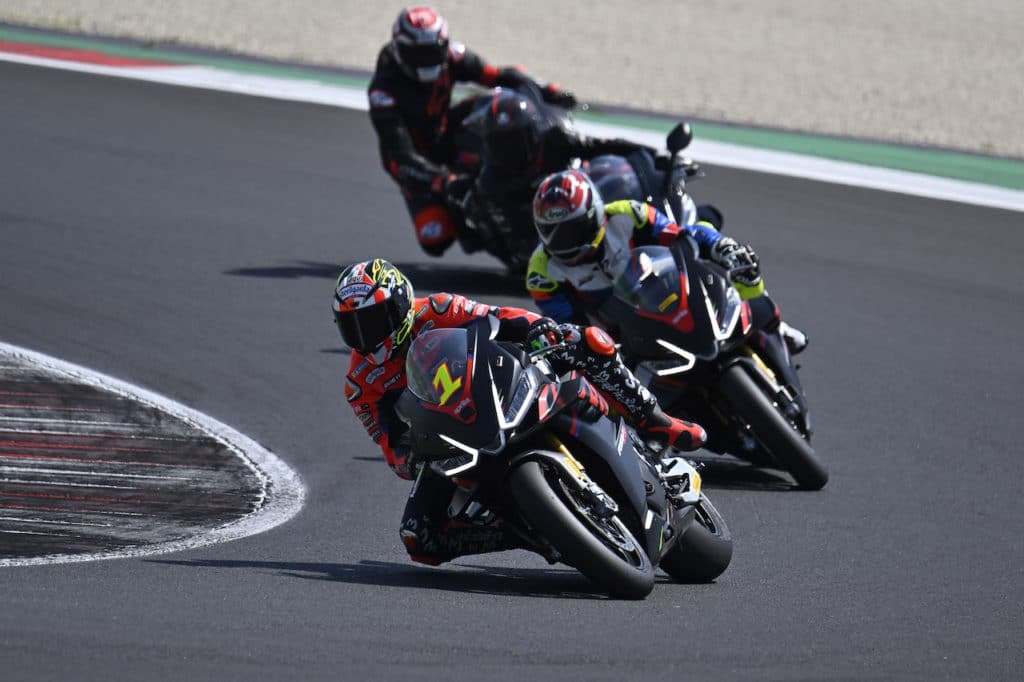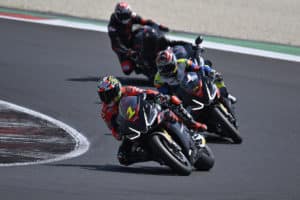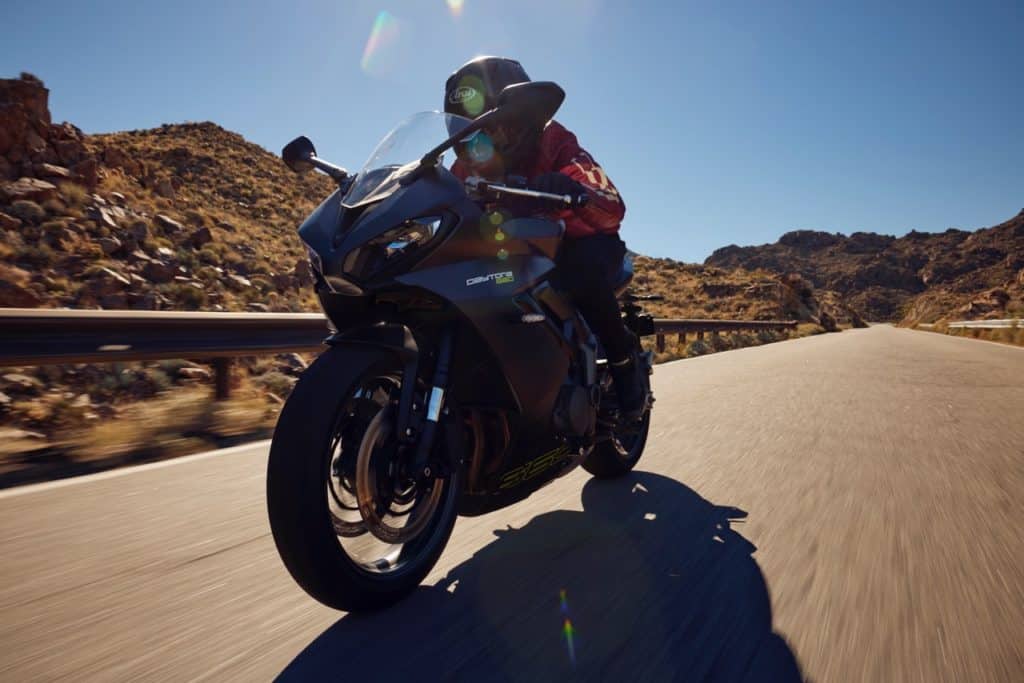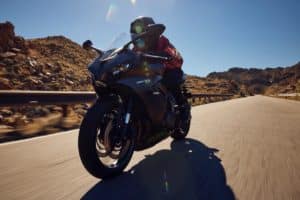Beta RR Enduro MY2019, an increasingly high-performance chassis and the 200 2 Stroke arrives! [ROAD TEST]
After the arrival of the 125 last year, the 200 cc vitaminized version is born
Say the Beta brand and think of Enduro. You say Enduro and you think of the World Championship. You say Enduro World Championship and…..you think of Beta. Too patriotic a premise? Perhaps, but Beta is the company that in recent years has won two EnduroGP World Manufacturers' titles, one Enduro3 World Title and one EnduroGP, certainly also thanks to the rider Steve Holcombe. However, the Tuscan company, with Brad Freeman, was not happy and also took home the Junior Enduro World title. In short, this preface may have nothing to do with the test of the RR Enduro my 2019 range which we will tell you about shortly, but in this market segment races are the driving force behind sales and it is right to mention the many successes, especially a totally Italian company (remember that Beta is not part of any larger industrial group with a foreign base) which had the strength (and achieved victory) to compete against much larger and more renowned companies. And all with just over 150 employees (155 is the exact number, always growing in recent years) and a base, Tuscany, which has nothing to envy of large foreign research and development centres.
Here, this is Beta, the manufacturer that has constantly grown on the market in recent years, with small but constant steps, which without overdoing it, strengthens its presence every year in the specialized and hard-fought Enduro sector (and beyond). This is why he took us to his land, Tuscany, to those places where, once a year, the press presentation takes place. This year, to test the 2019 Enduro range, we went to the Hells Gate of "Il Ciocco", starting from the 2-stroke displacements, the newly arrived 200, which is placed alongside the 125, 250 and 300, to then move on to the 4-stroke 350 , 390, 430 and 480. We tried them all, jumping from one bike to another (in the true sense of the word) in order to have a truly immediate feedback on the differences between one engine capacity and another, with their peculiarities. We will try to make you enjoy the same sensations that we experienced. In order we will show you the individual displacements so as to provide you with the general picture in the clearest way possible, with ascending order of the displacement, but the opening obviously deserves the surprise, the 200 which arrives just one year after the 125, from which it derives.
200 2 Stroke. The little big news
Eight models, this is the number of bikes tested during the day, yet as soon as we moved from the 125 2-stroke to the newborn 200, we sensed that, for this day, the 200 would be the most hotly contested bike of the group. Derived directly from the 125, the new 200 uses the same frame with a split double cradle structure (in chrome molybdenum) as its smaller sister, with the obvious revision of the fixing points for the larger engine. Engine which also derives from the 125, but both the bore and stroke of the latter have been revised. Let's see in detail what's new about this engine. Given the increase in these values, the 200 cc engine has a new 62 mm double ring piston, which has increased rigidity and reliability. The double band then guarantees better grip at medium-low speeds, which are exploited more thanks to the increase in displacement. This piston is combined with a new cylinder, which features an exhaust flange system like the larger displacements, which allows better control of the frontal piston-flap-cylinder clearance. By keeping this value to a minimum it is possible to obtain a considerable increase in performance at low engine speeds by reducing gas leakage. The new piston and related new cylinder are inserted into the new separable aluminum head: a rigid and light solution made possible thanks to the movement of the engine attachment onto the cylinder. The geometry of the combustion chamber is designed to guarantee high efficiency of the thermodynamic cycle and to obtain the best compromise between response at medium/low speeds and extension. It also makes it easier to set up and replace the combustion chamber. Moving on to the "lower part" of the engine we find the new die-cast crankcases in aluminum alloy: the geometries of the crankcases have been studied according to an innovative lay-out in terms of the relative position of the parts and with a view to maximum weight reduction without compromising the structural resistance. Particular attention has been paid to the main bearing area to ensure the correct rigidity of the walls in order to withstand the stresses transmitted by the crankshaft. Without neglecting any detail, even the crankcase covers are now die-cast in magnesium alloy: they guarantee extremely low weight and an excellent surface finish. It was also possible to adopt this solution for the internal clutch cover thanks to the isolation of the water pump from this element. A new reed valve pack is also introduced, called Vforce4, in which the presence of stoppers guarantees great reliability without compromising performance. To better transmit the greater power to the rear wheel there is a new 6-speed gearbox with front engagement. This new gearbox was specially developed for small displacement Beta engines, with gears obtained through mechanical machining of forged blanks. This is in order to offer mechanical resistance and reliability, whilst maintaining extremely low weight and overall dimensions. The new gearbox is coupled with a new multi-disc wet clutch with reversed opening and an actuator integrated into the external cover. It is a system designed for maximum lightness and compactness of the engine and which, thanks to its low positioning, guarantees the reduction of the size of the engine and a significant centralization of the masses, which are very important for good vehicle dynamics. The thermal cycle concludes with a new exhaust system: in order to optimize the characteristic torque and power curves of the 2-stroke engine, Beta's R&D (research and development) department has developed a special system dedicated to this displacement. The 200 also benefits from the introduction of the automatic mixer, practical for refueling at a normal petrol pump without worrying about the oil percentage (note: the mixer has an air sensor through which it fattens or leans the carburetion not only based on the engine rpm and throttle opening, but also on the altitude and air temperature, so as to always obtain an oil/petrol mixture and optimal lubrication). And from this displacement onwards the kick starter is eliminated in favor of a decidedly easier to use electric starter. This system has never created any type of problem on all the bikes tested, and it is no coincidence that it has also been used in competitions for years now. The elimination of the kick starter (already from the 2018 range), in addition to saving effort when restarting, perhaps after a crash, allows you to save around 1,5 kg. As regards the specific chassis part, the 200 cc has a new geometry and new upper attachments: various solutions were studied and developed until reaching the definitive one, which made it possible to reduce the vibrations generated by the engine, maintaining a significant value of rigidity of the engine-chassis system. There is a new ZF fork (group to which the Sachs brand belongs, which no longer appears on the suspensions since 2018) with 48 mm stanchions and a new adjustment system: it allows you to position the compression, rebound and spring preload adjusters on the upper cap of the fork, therefore reachable while remaining seated on the vehicle and without using tools. The fork also benefits from a new buffering system, which guarantees greater stability and a special anodized sheath which greatly improves its smoothness and resistance to wear. This new fork also has new legs that are now stiffer and lighter. The fork protectors are also new, designed together with the foot to combine functionality and design. The completely redesigned ZF shock absorber, with a 46 mm diameter piston, is compact. The new piston has been designed to offer perfect operating stability as oil temperatures vary and better sensitivity for the benefit of comfort and traction. The upper base and the expansion tank have also been redesigned to rationalize and reduce weight and dimensions to a minimum. New spring, also lighter. A new filter box sleeve designed for this type of engine allows for improved delivery throughout the entire operating range, starting from low revs. A new engine protector made of polyamide to combine strength and lightness, offering excellent shielding against the entry of mud between the engine and the protector. The petrol tank is slightly smaller in size than the higher models, to improve ergonomics on board the vehicle, while maintaining sufficient autonomy. A new cooling system has been specifically designed for this motorcycle, featuring new pipes and radiators with specially shaped tanks to adapt to the small size of the motorcycle.
The rest of the range, here are the news
The Beta RR Enduro model year 2019 range benefits from important technical developments, let's analyze them in detail. All 2-stroke engines with the new 2019 range receive a new control unit, which guarantees a decidedly more powerful spark at high speeds, thus improving engine combustion and, consequently, its maximum performance. Clutch actuator with increased diameter, very useful for reducing lever effort and making clutch operation more linear. In a practice like enduro, where you often find yourself in situations at the limit of gripping the handlebars, this innovation, which may seem trivial to those who are not in the sector, is instead decidedly important.
The 300 cc has a new exhaust valve opening system (BPV Beta Progressive Valve) created internally by Beta, and is characterized by a particular relationship between the opening of the main flap and that of the side boosters. The delay of the latter allows for a more fluid and linear delivery, eliminating the typical "flickering" of the exhaust valve during maximum throttle opening.
The 4-stroke engines all benefit from a new throttle control, created specifically by Domino for Beta, which now has an ovoid slide and no longer circular. This allows for a decidedly more progressive power delivery, without however having a long throttle control, resulting in excessive rotation of the wrist.
Engine maps. From this year all my 2019 models have a double mapping, sun or wet, which allows, combined with the new throttle control for the 4-stroke and the new control unit for the 2-stroke, to have two different types of delivery (one full" with a 1:1 ratio with the gas) and a more "damped" one for situations in which the ground does not offer the right grip to the tires.
ZF fork. Starting from this year, the Beta motorbikes are fitted with the new ZF fork (the name of the Sachs brand disappears, replaced by that of the parent company) which, as seen in the detail of the 200, now has the adjusters on the upper cap of the fork and therefore allow immediate adjustment without using tools and without having to get off the motorbike. The fork also benefits from a new buffering system which guarantees greater stability and a special anodized sheath which greatly improves its smoothness and resistance to wear. ZF shock absorber.
The shock absorber has also been completely redesigned, now with a 46 mm piston, smaller in size and approximately 300g lighter. The new piston has been designed to offer perfect operating stability as oil temperatures vary and better sensitivity for the benefit of comfort and traction. The upper base and the expansion tank have also been redesigned to rationalize and reduce weight and dimensions to the maximum. New spring, also lighter.
Our impressions, let's start with the new arrival 200 cc 2-stroke
During the press presentation the previous evening we had been extensively educated about the performance of the new 200, with graphs and tables, but we were curious to test all "those numbers" first hand. The 200 2 Stroke in fact has the same chassis (albeit modified), the same chassis as the 125 and even the peak power, in terms of declared horsepower, is very similar. Yet, the 75cc difference has significantly increased the torque curve and moved the power delivery, always progressive, linear and explosive, almost 1.000 rpm lower. All this has thus created what, at the end of the day, could be defined (also based on the route chosen) as the ideal motorbike for almost everyone. The agility of the chassis is the same as the 125, so the curves can be taken at crazy speeds and with great ease, but with the engine responding to the throttle command more effectively (thanks to the greater torque), you can make a mistake it drives without remaining "still". You never find yourself in short supply and this makes the bike effective wherever you are on the route. In addition to being the ideal motorbike, even for newbies who don't risk finding themselves blocked due to the too sharp delivery of the 125. In short, this new 200, which joins the already wide range of Beta engines, turns out to be a nice novelty. Compared to the 125, we remind you that it gains electric ignition and automatic mixer. It will go into production in the autumn and will be in Beta dealerships at the beginning of next year.
The "entry level" in the world of enduro branded Beta is 2-stroke and the displacement is 125 cc (the 50cc still in the price list has not received my 2019 updates ed.). This motorbike is pure agility and lightness thanks to the compact engine, excellently centered in the frame, which has been updated for 2019 and which, thanks to the smaller displacement engine, makes the motorbike extremely agile and fun. The engine enjoys the typical explosive delivery of 2-strokes, with a nice viciousness in the upper part of the rev counter while, for obvious reasons of cubic capacity, it remains less aggressive with the torque in the first part of the delivery. However, the agility of the chassis allows you to turn the bike really quickly and therefore keep the engine lively and firing. However, if you happen to find yourself "under torque", the classic pinch of the clutch is enough to get out of any obstacle. The only negative note, but this is a subjective judgement, remains the limited stability in the steep and fast sections, where pushing a 125 to the limit is the stuff of professionals, especially in terrain like that of Hells Gate del Ciocco.
We know them well, having tried them several times in recent years, but it's strange to get back on the bike after trying the new 200 2 Stroke. In fact, this would seem to make them useless. Obviously it is heresy and as we "repair" ourselves with the top of the range 2-stroke bikes, we begin to understand and justify their presence in the Beta price list again. Great power, greater stability, approaching that of 4-strokes, as well as very high level technique. They are the two-strokes for those who are serious, while the 200 appears perfect for the amateur, despite still being race-ready. There is no point in denying you, however, that we would be curious to have an inexperienced rider try the 200, 250 and 300 in sequence, because the work done on the new arrival from Beta certainly makes it a great alternative to the best-selling 300 (the most sold ever). Complete bikes, with an impressive low profile for a 2-stroke, the 250 and 300 confirm all their qualities and you can feel the good news, especially for the chassis. If in the past the Racing versions were also chosen by some amateurs, not convinced by the standard RR, now Beta raises the bar a little and could convince even the most demanding.
350 4 stroke. Your first 4-stroke, but not only that
We have just tried a 2018 Racing one, finding it to be a bike for everyone, we also confirm our recommendation on the standard 2019 RR. With a chassis that is also quick and an engine that is "torque" at the bottom, but still pawing at the top, where it stretches well, this displacement also allows you to go from 2 to 4 strokes without suffering any shock. In fact, it remains a very agile and light motorcycle, thanks to the frame for 4-stroke engines, which is only slightly larger than that for 2-stroke engines. Beta technicians have widened the cradle part, without affecting the handling of the bike, without even modifying the attachment points of the fork, swingarm and saddle.
390 4 Stroke
For those who don't do this sport at a competitive level, but only for passion, the next step is the bike to have for high-level enduro. This 390 is probably, from some points of view, the top of Beta's 4-stroke range. The right engine, in the right chassis, with performance that is always adequate for every situation. The 390 4-stroke allows both those who have recently taken up enduro riding and those who want a powerful and at the same time reliable and fun motorbike to get a lot of satisfaction.
430 and 480 4 Stroke: Monstrous!
The game gets tough if you want to use the bike 100%. If you need the extra power of the 430, compared to that of the 390, it is most likely because you are a rider of a certain size and stature and therefore prefer, for obvious reasons, to have an even higher-performance engine. Then the Beta 430 is the right bike for you. However, you must be an enduro rider of a certain level to be able to tame it as it deserves.
Despite being on the Tuscan Hells Gate track, the test of the 2019 Beta range took place on a medium-slow speed section. It is necessary to remember this because, there is no point in beating around the bush, the Beta 480 is truly monstrous, but we were unable to savor its true potential, in the sections with the most demanding extensions. The 480 is a motorbike that requires very open spaces to express its full potential and, even more so, it deserves a rider who has a firm and decisive pulse and riding ability well above average. During the test we must say that the 480, absurdly, is the bike that left us most perplexed with its chassis, which was too rigid, but the reasons are immediately revealed. The Beta technicians themselves have, rightly, informed us that the suspensions of the 480 are stiffer and firmer than the rest of the range, precisely because the power involved is so great and, if they weren't so "sustained" in their reactions, the entire cycling department would be negatively affected.
All My 2019 bikes have new graphics and new colors. All the prices of the wide 2019 range, despite the many improvements, remained unchanged compared to the previous year, with only the 125 receiving a minimal increase.
125 2T €7.990
250 2T €8.190
300 2T €8.290
350 4T €8.990
390 4T €8.990
430 4T €9.090
480 4T €9.190
As always, Beta will launch the Racing versions of its models in the coming months, usually offered at an additional 500 euros, with high-quality components, "race ready" and with dedicated colouring. The new 200 2 Stroke is not yet present in the price list, it will be available in the new year, while all the motorbikes indicated above will be available from mid-June.
Angelo Pezzano collaborated
Clothing used by the tester:
Jersey and pants: Alpinestars Techstar Screamer
Gloves: Alpinestars Aviator
Boots: Alpinestars Tech 7
Knee, elbow and torso protectors: Alpinestars
Helmet: UFO
Mask: Scott Prospect
if you want to always be updated on our news
Follow us here

